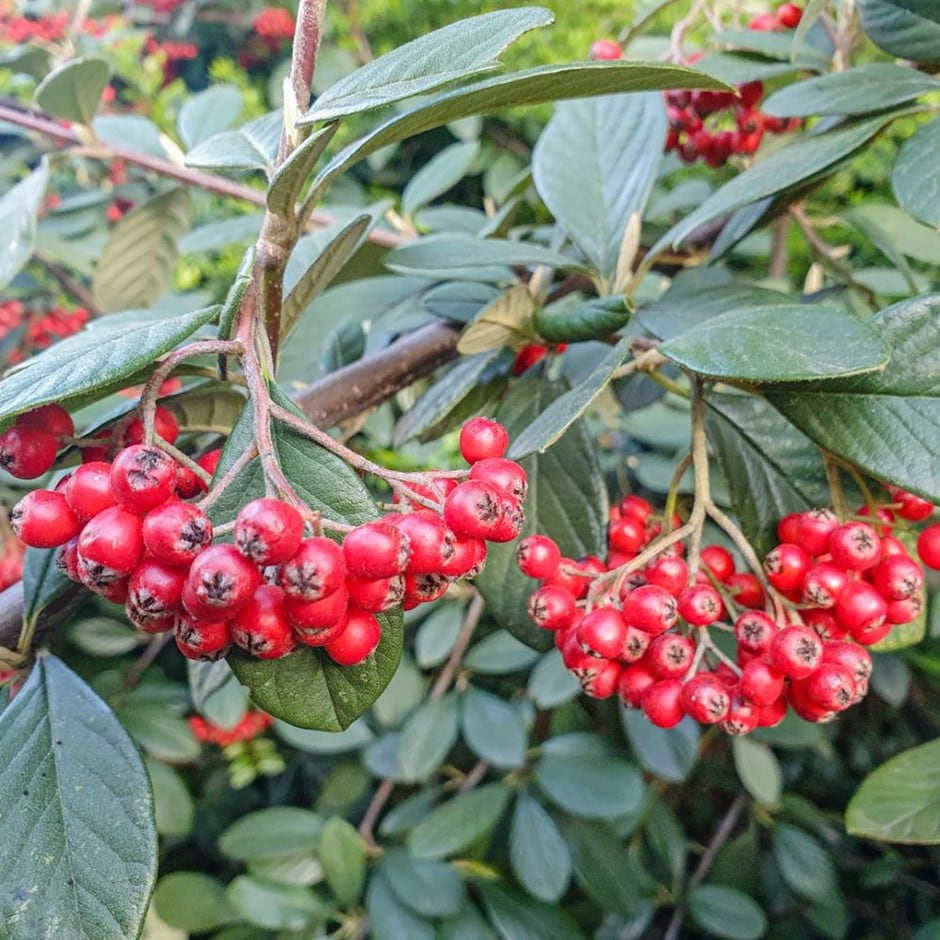Clusters of red-tinted white flowers in June, followed by bright orange-red autumn berries, and long, grey-green leaves. This splendid, semi-evergreen (or evergreen in milder, sheltered situations) cotoneaster is ideal for a shrub border with moderately fertile, well-drained soil. Erect in habit with spreading branches, its stems can be tied onto a support and grown as a wall shrub.
How to care for Cotoneaster franchetii:
Incorporate a quantity of well-rotted garden compost or horse manure in the planting hole to improve the moisture-retentive qualities the soil and a scoop of mycorrhizal fungi to aid root establishment. Prune back after flowering to strong buds or young lower branches. On older plants, cut back about a quarter of the old shoots to the base.
Eventual height:
4m
Eventual spread:
4m
Soil:
Moderately fertile, moist, well-drained soil
-
 This shrub is semi-evergreen, so it can lose some of its leaves in winter. In colder regions or more exposed gardens, it may lose them all, but then fresh new foliage appears again in spring.
This shrub is semi-evergreen, so it can lose some of its leaves in winter. In colder regions or more exposed gardens, it may lose them all, but then fresh new foliage appears again in spring.
-
 Humans/Pets: Fruit are ornamental - not to be eaten
Humans/Pets: Fruit are ornamental - not to be eaten





